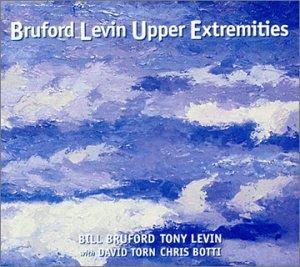
| Artist: | Bruford Levin Upper Extremities |
| Title: | Bruford Levin Upper Extremities |
| Released: | 1998.08.28 |
| Label: | Papa Bear Records |
| Time: | 55:56 |
| Producer(s): | Tony Levin |
| Appears with: | King Crimson |
| Category: | Progressive Rock |
| Rating: | *******... (7/10) |
| Media type: | CD |
| Purchase date: | 2001.06.30 |
| Price in €: | 16,64 |
| Web address: | www.tonylevin.com |